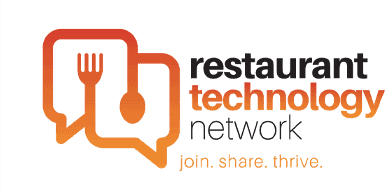Author: Ryan Williams
I was recently featured on a roundtable hosted by the RSPA, the leading Retail Solution Provider Association for all things retail hospitality and everything in between. The purpose of the roundtable was to identify the trends over the last 18 months — what will stay and what will go. Based on these trends, we discussed how restaurants can better future-proof themselves moving forward. Here are three takeaways and trends from that panel:
1. The pandemic has shrunk the technology gap between the hospitality and retail world substantially. Prior to the pandemic, the hospitality space was consistently lagging behind the rest of the retail industry when it came to technology. Restaurants were still relying on technologies that have been around for the last 30 years with no real focus on revolutionizing the way people interact with their restaurants.
Almost overnight, restaurants were faced with the hardships the lack of technologies created. Consumers and restauranteurs alike we’re forced to adopt new technologies and learn new ways of engaging with each other. Some of this tech was already being used in retail but had not made its way to the restaurant space. Others were new concepts to support a novel problem. Either way, people adapted, and this augmented methodology of ordering has firmly taken hold and will continue to impact and encourage the evolution of the industry and the technology serving the hospitality space for years to come.
2. The staffing and labor issue isn’t one that’s going away anytime soon. If you look at unemployment numbers, restaurants aren’t understaffed because people aren’t willing to work, rather, restaurants are understaffed because, during the multi-month shut down of these businesses, the restaurant staff was forced to find other ways to make money. Seemingly, these other methods were more appealing and have encouraged servers, dishwashers, bussers, and hosts to stay out of the hospitality space.
This new challenge begs the question, how do restaurants attract and more importantly retain the staff they need in order to run their businesses? The answer is relatively simple. Treat your staff fairly, and make sure they are given the tools required to do their job easily and efficiently.
Certain technologies, like OneDine, have increased the effectiveness of limited staff. This typically means each staff member is paid more, the restaurant itself is more profitable, and the staff is ultimately happier which may lead to greater employee retention.
3. Change is the only thing that is certain in life. If you had asked anyone in the restaurant industry in January or February 2020 to guess what the future held, no one would have been able to fathom what we’ve endured the past 18 to 24 months. Many restaurant owners were caught off guard by such a sudden change, and their businesses were negatively if not fatally impacted. Some of the biggest takeaways from this evolution in the hospitality space are those that we haven’t even realized yet.
I doubt we will see an event as impactful as the pandemic has been again in our lifetime…at least we all hope so! What is certain is that technology will change, consumer demand will change, and the ways that guests and consumers access data and interact with brands will change. Restaurants can not be caught on their heels again. We saw the detrimental impact that taking a laissez-faire attitude towards technology can have on businesses. Expect change, embrace change, and look for partners that can grow and evolve with your business to help keep you at the forefront of consumer demands and any other change that may come down the line.





